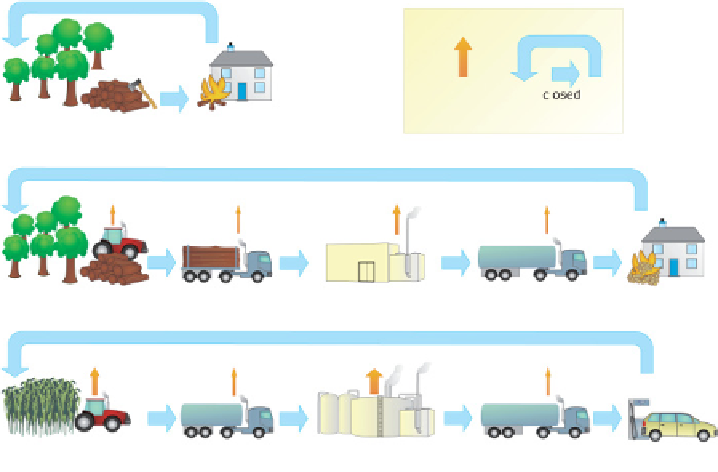Environmental Engineering Reference
In-Depth Information
are almost zero. If one takes into account the indirect carbon dioxide emissions that
result from the production and the transport of wood pellets in an overall balance
sheet, the carbon dioxide emissions from wood pellet heating are still around 70%
lower than those of natural gas and more than 80% lower than those of oil heating
(Figure 12.19 ).
Figure 12.19
Environmental balance sheet for the use of biomass fuels.
The harmful substances that build up when biomass is burnt create far more of a
problem than indirect carbon dioxide emissions. Whereas large biomass power
plants have sophisticated fi ltering systems, single-family homes mostly use their
heating systems without any fi ltering mechanism. The blackened chimneys of their
fi replaces testify to this. Even if the carbon dioxide balance sheet turns out to be on
the plus side, biomass heating can release all sorts of other harmful substances into
the environment if it is not burnt properly. In Germany today the emission of
harmful fi ne dust from wood-burning plants is already in the same order as that
of motorized street traffi c. Yet there are clear differences depending on the type of
heating system used. Due to their poor effi ciency, open fi replaces generally cause
particularly high emissions. Therefore, the use of open fi res is banned in many
places.
When dry fi rewood or standardized wood pellets are used in modern boilers, the
emission values with the same heat output can be 90% lower than with a fi replace.
Different companies are now working on producing fi lters to prevent the emission
of dust from small systems.





























































